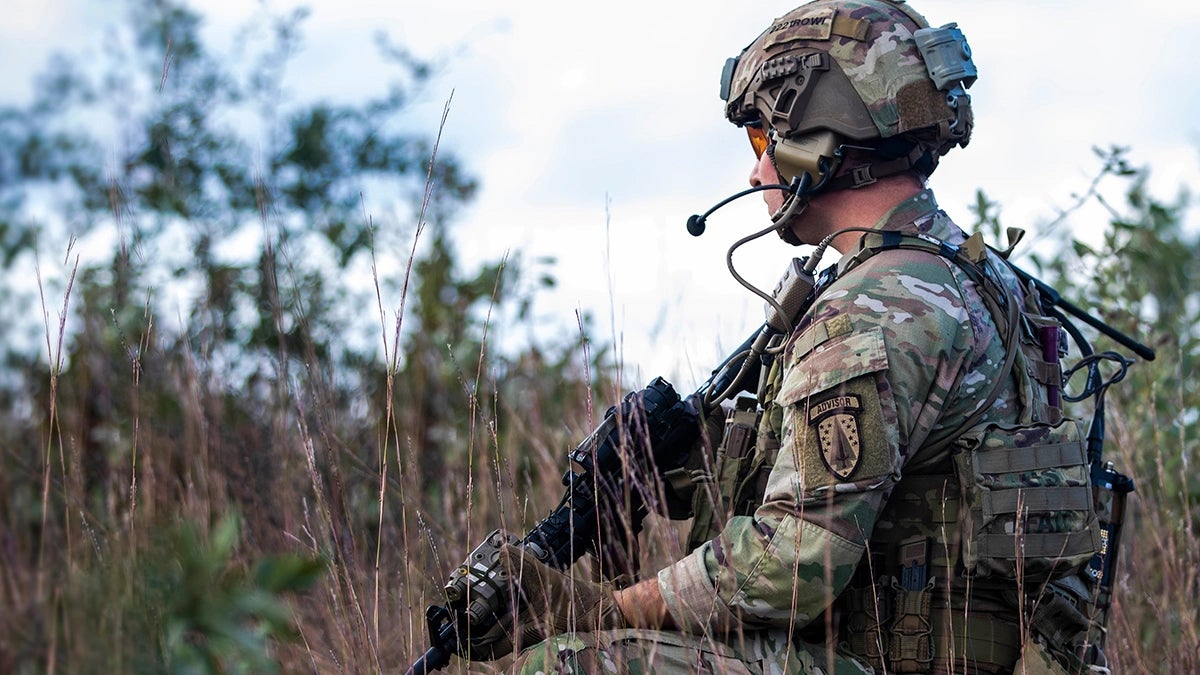'Security Force Triad’ is Powerful Army Tool
'Security Force Triad’ is Powerful Army Tool

As a land force, the Army is strategically poised to leverage relationships with allies and partners in multidomain competition, but it must continue to proactively build its network, according to the author of a new paper.
Describing the Army’s security force assistance brigades, Special Forces soldiers and the State Partnership Program as a “security force assistance triad,” author Charles McEnany writes that all three are critical to the Army’s “modernization for strategic competition and [multidomain operations].”
Together, the organizations “maximize the economy of force by strengthening deterrence, lowering the burden on American forces and promoting U.S. global influence,” McEnany writes, adding that, “With the international order under strain, Washington must proactively grow its unmatched network of partners.”
In his paper, “The Army’s Security Force Assistance Triad: Security Force Assistance Brigades, Special Forces and the State Partnership Program,” published by the Association of the U.S. Army as part of its Spotlight series, McEnany promotes the concept that as a land force, the Army’s security force assistance triad has closer strategic and tactical contact with their international counterparts.
“Nearly every country maintains a land force, giving the Army an in-roads through its global landpower network,” writes McEnany, a national security analyst at AUSA. “Even in regions thought to be naval-dominated, relationships forged by the Army can set the foundation for broader U.S. engagement.”
Though the SFABs, first stood up in 2017, are the first purpose-built formations for security force assistance, the Army has conducted such missions for decades with Special Forces soldiers and through the successful State Partnership Program managed by the National Guard since 1993.
“Through the three complementary legs … the Army maintains a cost-effective and regionally tailored capability to train foreign forces while fostering broader governmental and societal engagement,” McEnany writes.
McEnany invokes the 2018 National Defense Strategy in which allies and partners feature prominently in defense strategies, using a passage from the document that states “allies and partners provide complementary capabilities and forces along with unique perspectives, regional relationships and information that improve our understanding of the environment and expand our options.”
Likewise, he writes, the 2022 National Defense Strategy calls for incorporating “ally and partner perspectives, competencies and advantages at every stage of defense planning,” and the Army has heeded that call by making “security force assistance central to modernization.”
McEnany recommends that the Army ensure close coordination and alignment between the SFABs and the multidomain task forces in Europe and the Indo-Pacific theaters, new organizations that are designed to provide theater-level, multidomain maneuver elements that synchronize long-range precision effects. “Successful maneuvering in competition is the foundation for MDTF operations in crisis and conflict,” and the SFABs provide access and influence that the task forces exploit, he writes.
He also recommends that the Army prioritize fully manning SFABs because of their importance in competition, and that leaders pursue opportunities to incorporate the synthetic training environment into security force assistance.
“This coalition of like-minded nations, united by shared values, is invaluable in the era of strategic competition,” McEnany writes.
See the full paper here.

